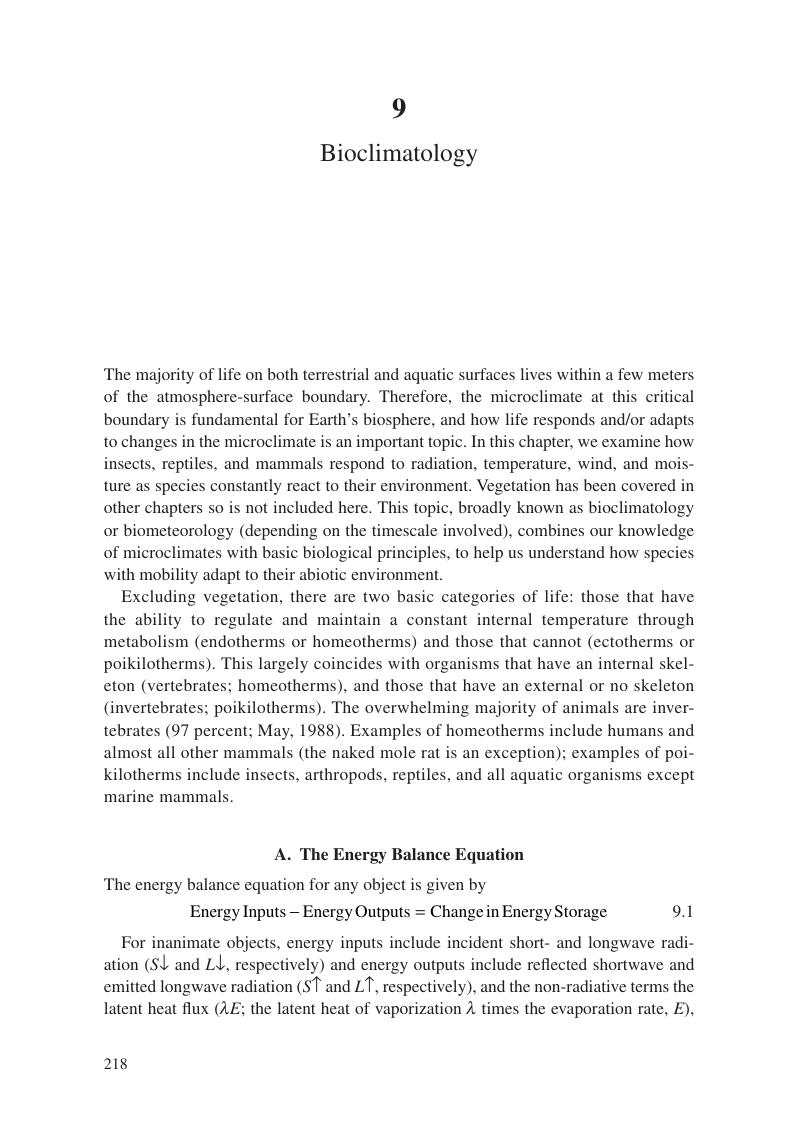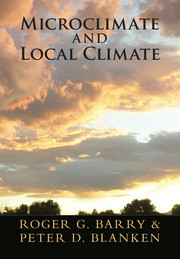Book contents
- Frontmatter
- Contents
- Preface
- Acknowledgments
- 1 Introduction
- Part I Controls of Microclimate
- 2 Microclimatic Elements
- 3 Methods of Observation and Instrumentation
- 4 Radiation
- 5 The Energy Balance
- 6 Monitoring Radiation, Energy, and Moisture Balance via Remote Sensing and Modeling with Land Surface Models
- 7 Microclimates of Different Vegetated Environments
- 8 Microclimates of Physical Systems
- 9 Bioclimatology
- Part II Local (Topo-)Climates
- Part III Environmental Change
- Problems
- Glossary
- Symbols
- System International (SI) Units and Conversions
- Index
- References
9 - Bioclimatology
from Part I - Controls of Microclimate
Published online by Cambridge University Press: 05 May 2016
- Frontmatter
- Contents
- Preface
- Acknowledgments
- 1 Introduction
- Part I Controls of Microclimate
- 2 Microclimatic Elements
- 3 Methods of Observation and Instrumentation
- 4 Radiation
- 5 The Energy Balance
- 6 Monitoring Radiation, Energy, and Moisture Balance via Remote Sensing and Modeling with Land Surface Models
- 7 Microclimates of Different Vegetated Environments
- 8 Microclimates of Physical Systems
- 9 Bioclimatology
- Part II Local (Topo-)Climates
- Part III Environmental Change
- Problems
- Glossary
- Symbols
- System International (SI) Units and Conversions
- Index
- References
Summary

- Type
- Chapter
- Information
- Microclimate and Local Climate , pp. 218 - 240Publisher: Cambridge University PressPrint publication year: 2016



